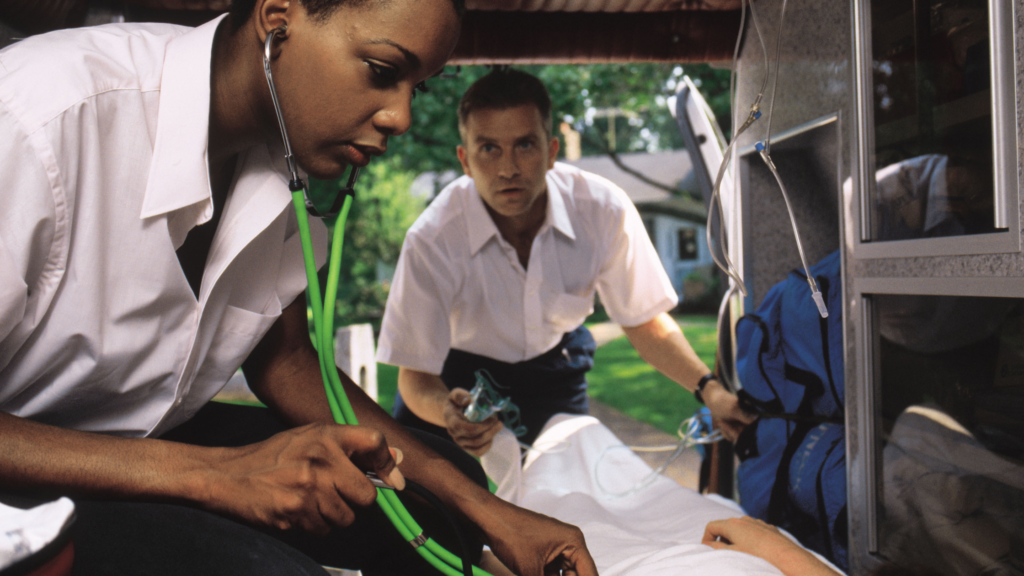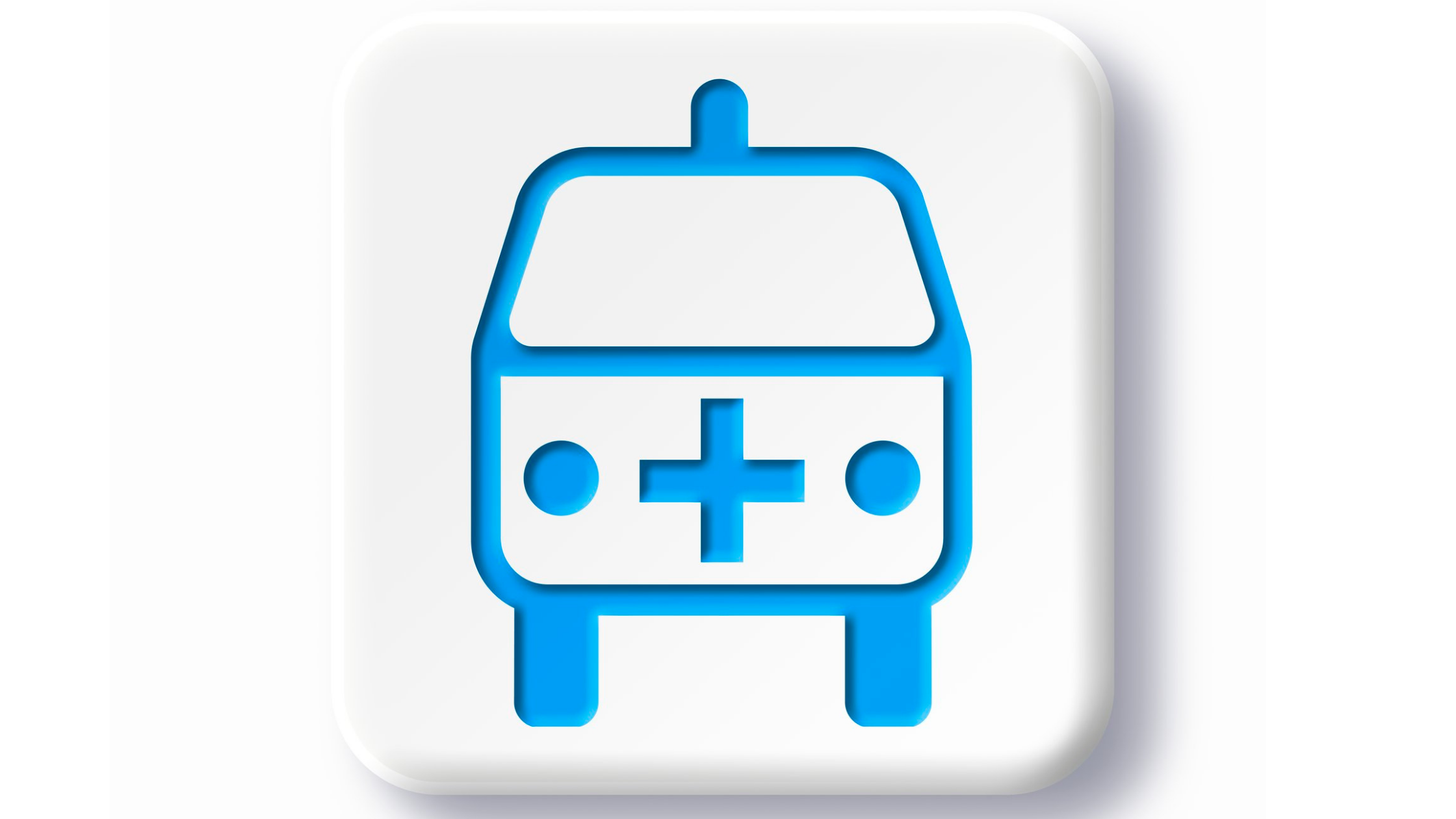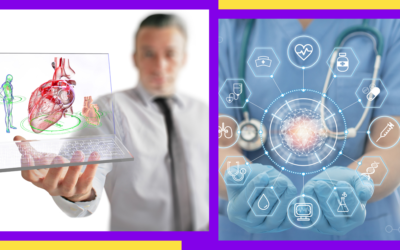Emergency medical service (EMS) providers have to make life-saving decisions in a split second. Every community offers this critical service, whether as a public, private, or volunteer agency. And yet, they often do not have much patient information available during emergencies. This is where connecting EMS and hospitals through a Health Information Exchange (HIE) could make a big difference.
Health Information Exchanges traditionally focused on hospitals, labs, clinics, and doctor’s offices. The intent was to ensure sharing of patient information real-time to inform medical treatment decisions. For some reason, ambulances were left out. And even though 75% of US states store data from local EMS providers, that data it is not part of the exchanges.
Some question whether EMS not included because it is not as big a voice as hospitals or insurers. However, funding may be the real blocker – several states that started this work leveraged grants.

What is a Health Information Exchange?
A Health Information Exchange is a software platform that allows doctors, nurses, pharmacists, other healthcare workers, and patients to share medical information electronically. These exchanges share information like:
- Medications
- Tests and results
- Health problems
- Pregnancy
- Immunizations
This software also standardizes data. That means it puts information into the same format, which is needed for different systems to share it.
Health Information Exchanges are not new. In fact, they have been around for about 10 years. In 2010, 56 states and territories received money to set up Health Information Exchanges. Each state or territory was responsible for connecting patient information. Since that time, many launched and grew.
The ongoing challenge is to connect as many providers as possible.


Why are Health Information Exchanges important?
There are many benefits to these exchanges, and the pandemic showed how critical they are.
Benefit #1: HIEs can make patient records more complete.
Having more complete information can improve care. Especially for older adults who may have a number of health issues and see many different doctors, having a way for those doctors to look at the same information is important.
Benefit #2: HIEs can help people avoid the hospital (again).
Exchanges can send discharge instructions to a primary care provider, and share information specialists need to see to coordinate care. Some states have HIEs set up to alert the primary care provider when their patient gets admitted to a hospital. The provider can follow-up to make sure the patient has what they need to avoid readmission.
Benefit #3: They can prevent medication errors.
Medication errors can be deadly. HIEs can connect pharmacies to providers and hospitals so everyone who needs to know can see what medication a patient is taking. This can prevent prescribing medications that have bad interactions with each other.
Benefit #4: HIEs can help people avoid double testing.
When providers cannot see test results, they may send a patient for the same test they already had. This means more co-pays to the lab, more exposure to radiation or dyes if the tests requires it, and a bad experience for the patient. Health Information Exchanges can help providers avoid duplicate testing.


Benefits of connecting EMS to Health Information Exchanges
Patients are not always conscious and able to communicate in emergencies. Integrating EMS with Health Information Exchanges will help them get information they can use to identify problems faster. They could have access to information like allergies and medical history. This would also help them to get people to the most appropriate care, and share information with downstream providers faster.
Having any gap between EMS and the emergency room is bad for patients. Currently, much of the patient information is still being shared by radio or hard copy reports. It means ER physicians do not have timely information on what happened in the ambulance. Connecting EMS and hospitals would allow the ER physicians to have information ahead of the patient’s arrival.
There are also communities that employ advanced paramedics and community paramedics to do follow-up home visits following discharge from the hospital. These specialized paramedics could use the information from the hospital to plan their visits.
Finally, EMS agencies could share information during disasters. When there is a pandemic, a major storm, or some other natural disaster, emergency agencies have to work together. Having access to the same information from HIEs would make that job easier and more coordinated.


Some progress connecting EMS and hospitals
There are several states making progress in incorporating EMS into their HIEs:
California’s health information exchange, Manifest MedEx, used a $4.9 million grant to exchange data between ambulance providers and hospitals. This HIE covers 6 EMS agencies, 13 EMS providers, and 16 hospitals across 8 counties with a total population of 7.6 million people.
Manifest MedEx will support a bi-directional data exchange to make sure EMS has more information in the field as they care for patients. It will also give real-time alerts to hospitals of patients coming their way, and ER providers will know what care was provided in the ambulance.
The Healthix HIE in New York is starting to connect EMS and hospital emergency rooms. They began connecting 17 small independent EMS agencies and the Fire Department of New York. Their plan is for EMS agencies to send patient data to Healthix as pre-hospital care reports (ePCRs), which Healthix will send on to the 81 hospitals it is connected to.
To start they will send data in one direction from EMS to hospitals. The longer-term plan is to have information about pre-existing conditions and medications go from Healthix to EMS.
Rochester RHIO (Regional Health Information Organization) connected two EMS providers last December. New York State Department of Health offered a grant called the Data Exchange Incentive Program (DEIP) to help offset cost for connecting EMS providers and pharmacies into HIEs. These grants helped in the past with connecting long-term care facilities, diagnostic treatment centers, and behavioral health organizations.
Finally, in Colorado EMS agencies can look up patient information on the CORHIO HIE’s PatientCare 360 web portal for data from hospitals and labs. EMS can also direct message providers through the portal.


Key Takeaways:
Ensuring Emergency Medical Service providers have access to updated patient information can save lives. Making sure that information is then shared on with emergency room providers also makes life-saving differences. Connecting EMS and hospitals through a Health Information Exchange is the best opportunity for having a bi-directional data exchange.
States are slowly starting to incorporate EMS into their Health Information Exchanges, which is a positive sign. More funding may be needed to make sure this progress continues, since many states used grants to get started.






0 Comments